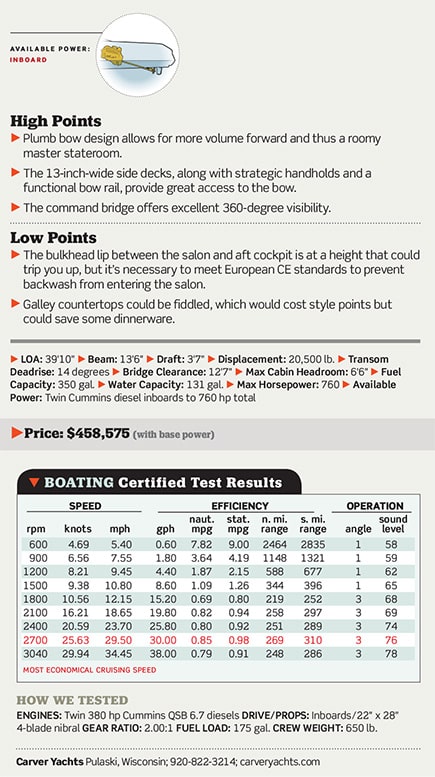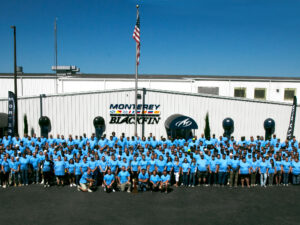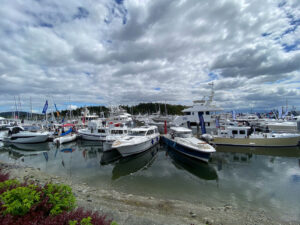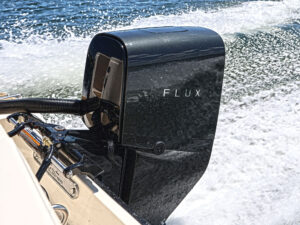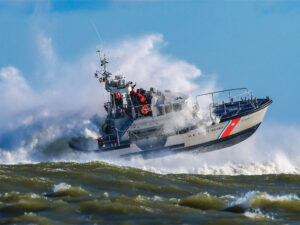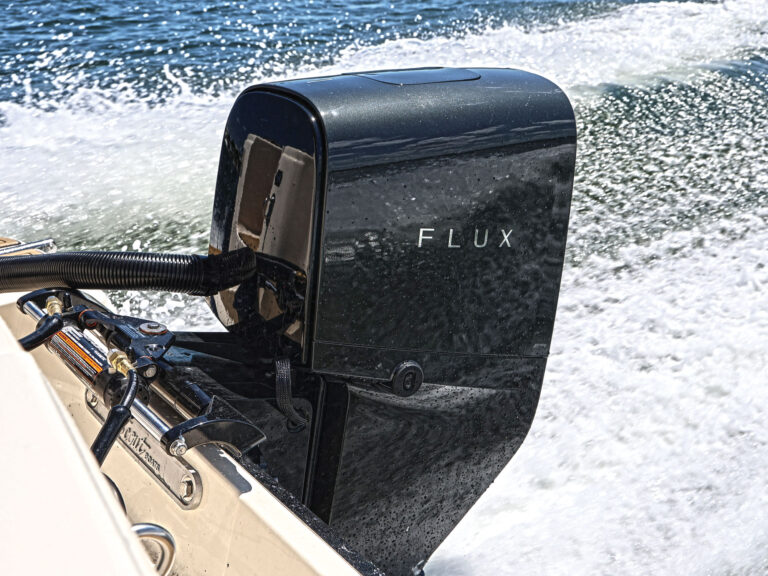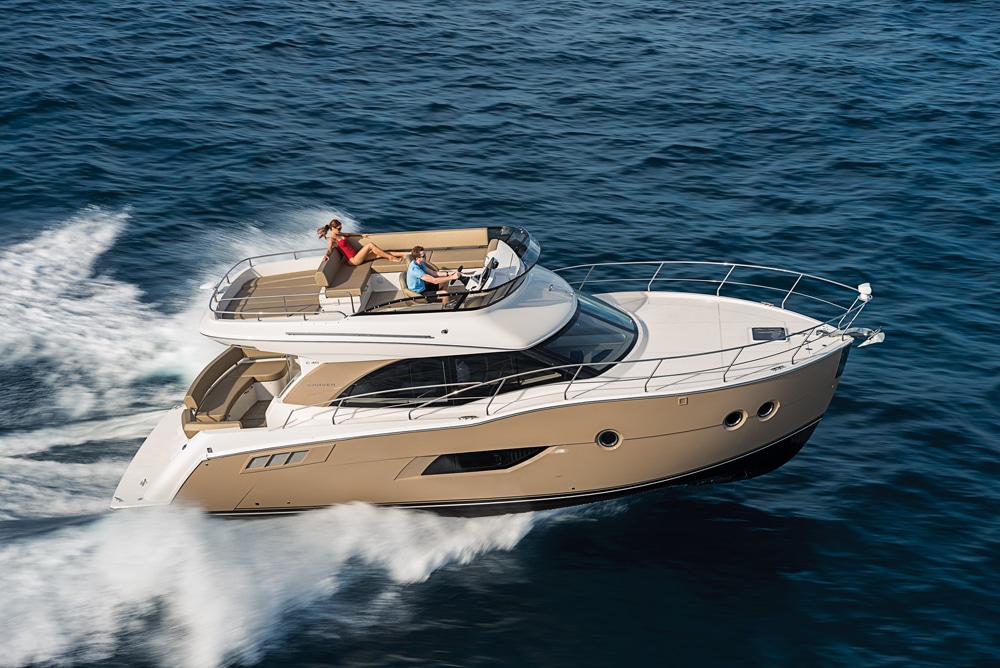
Carver C40
Beam: 13’6″
Draft: 3’7″
Displacement: 20,500 lb.
Transom Deadrise: 14 degrees
Bridge Clearance: 12’7″
Max Cabin Headroom: 6’6″
Fuel Capacity: 350 gal.
Water Capacity: 131 gal.
Max Horsepower: 760
Available Power: Twin Cummins diesel inboards to 760 hp total
More Information: carveryachts.com
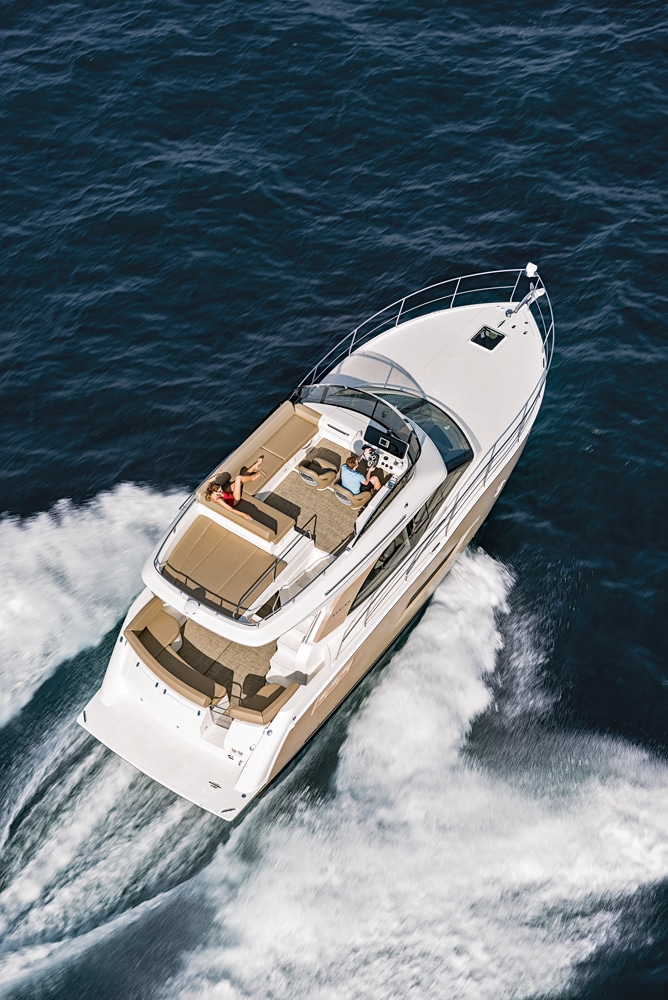
Carver C40
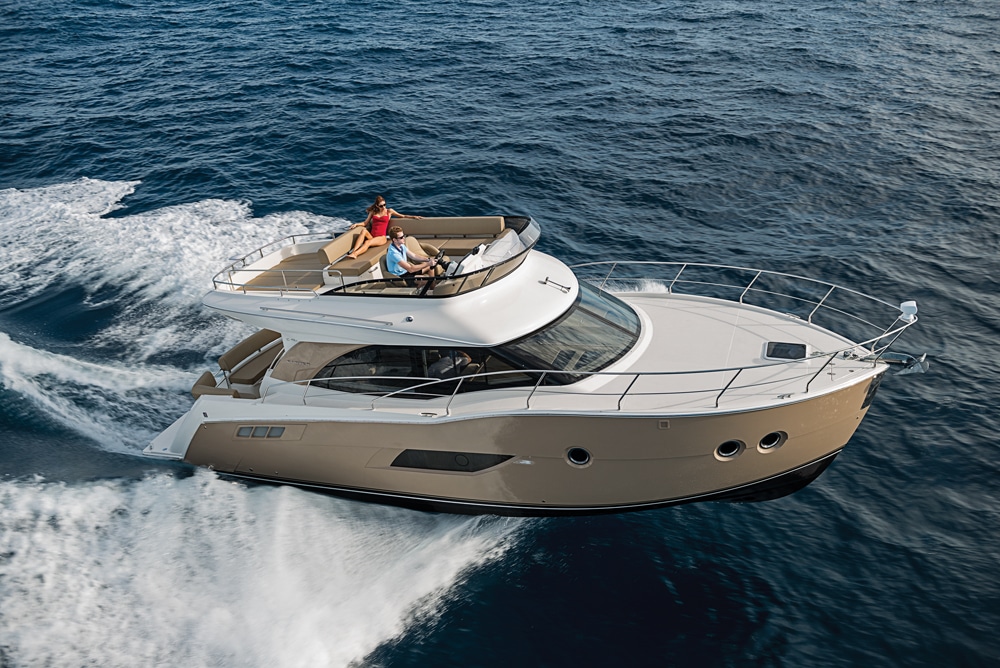
Carver C40
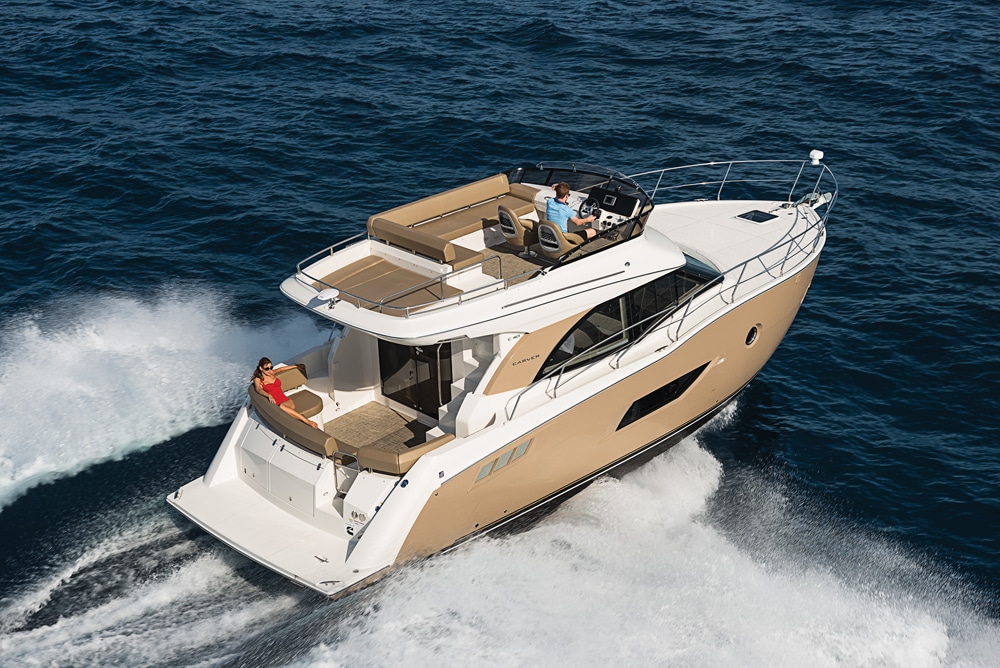
Carver C40
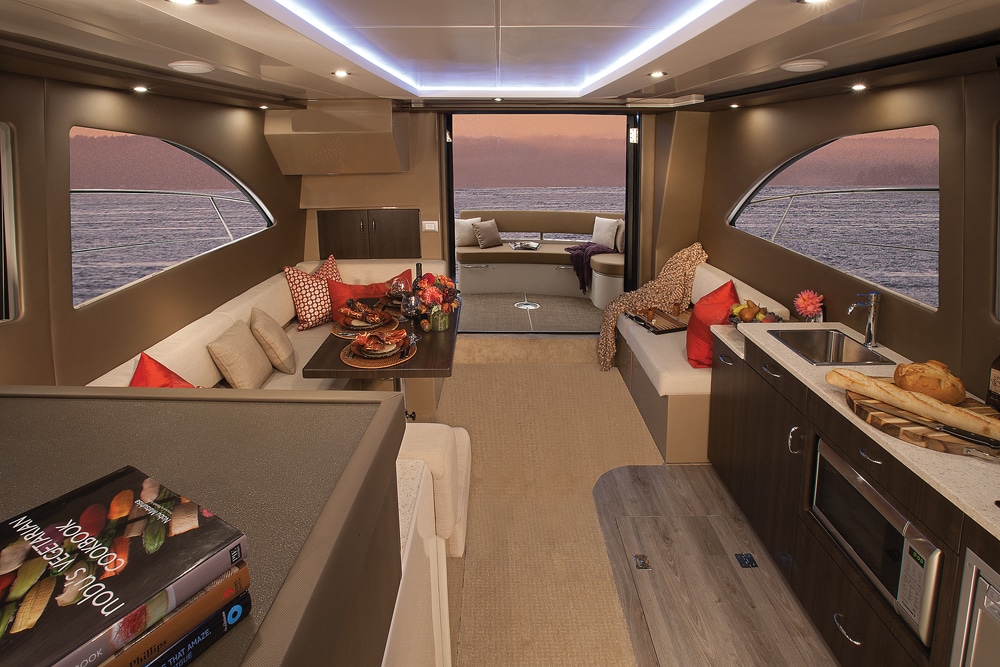
Carver C40
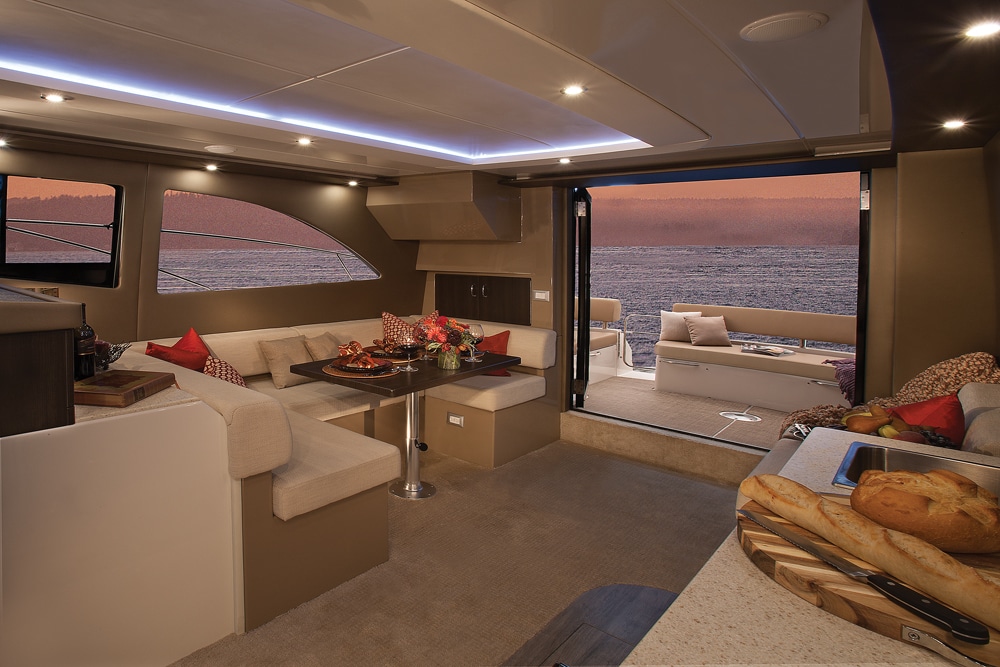
Carver C40
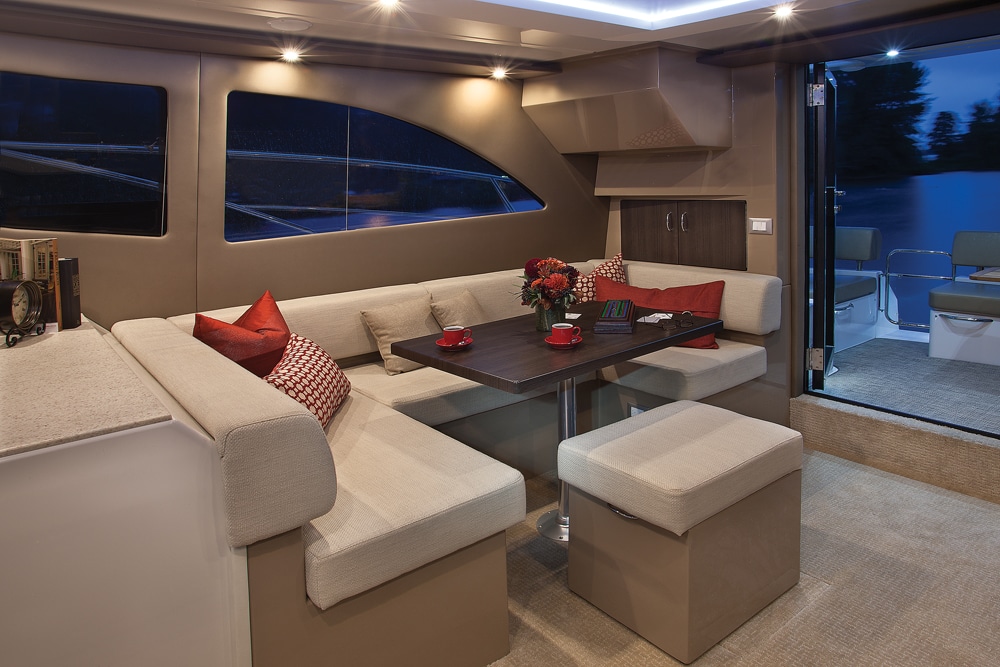
Carver C40
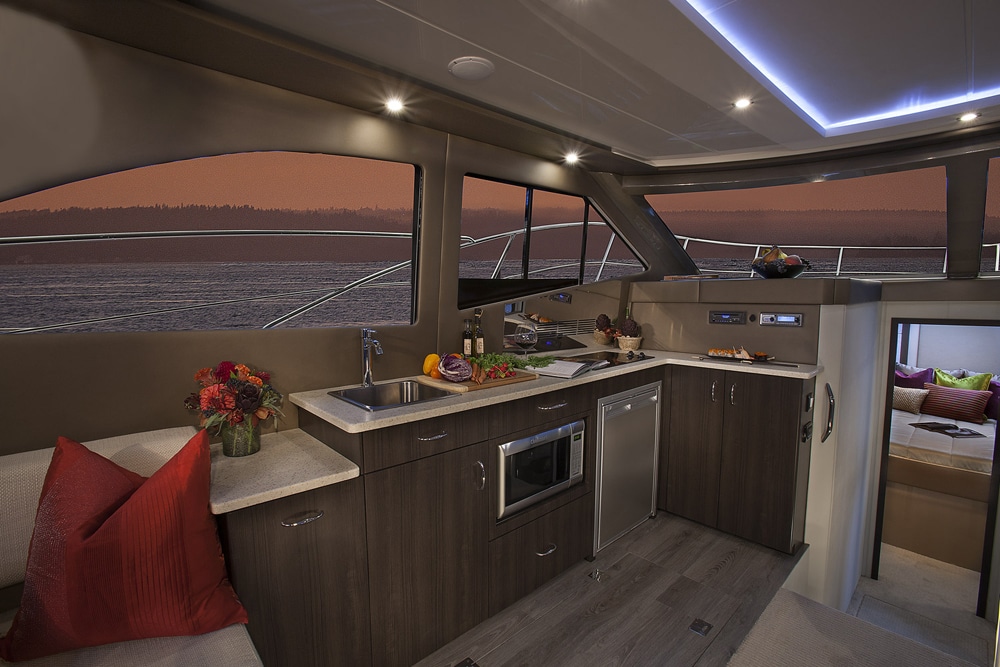
Carver C40
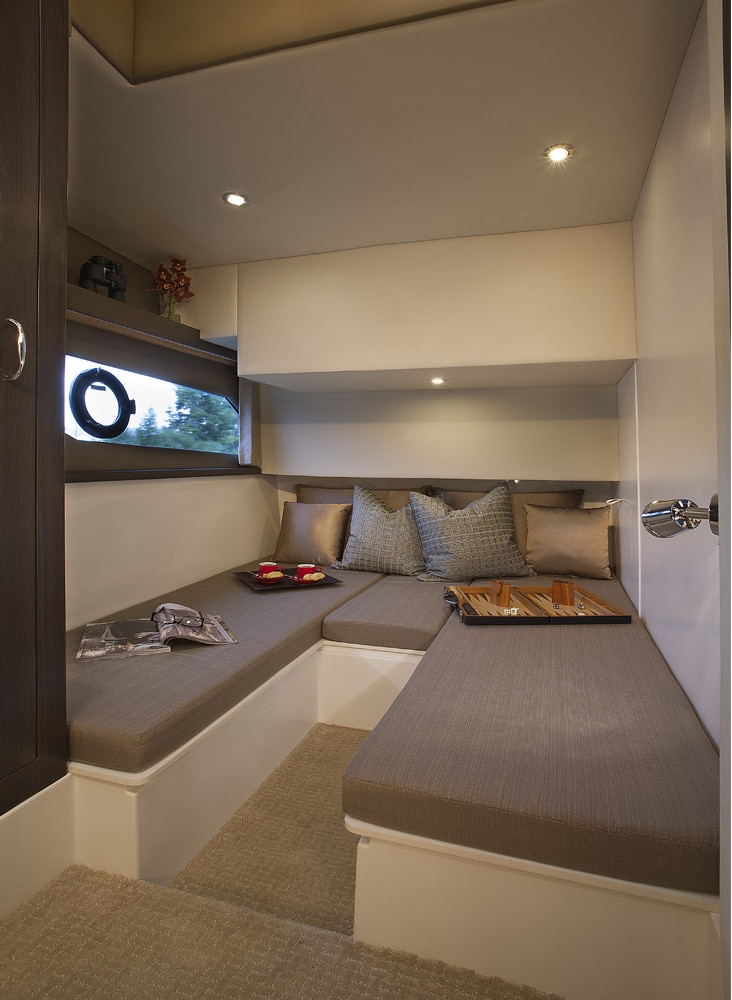
Carver C40
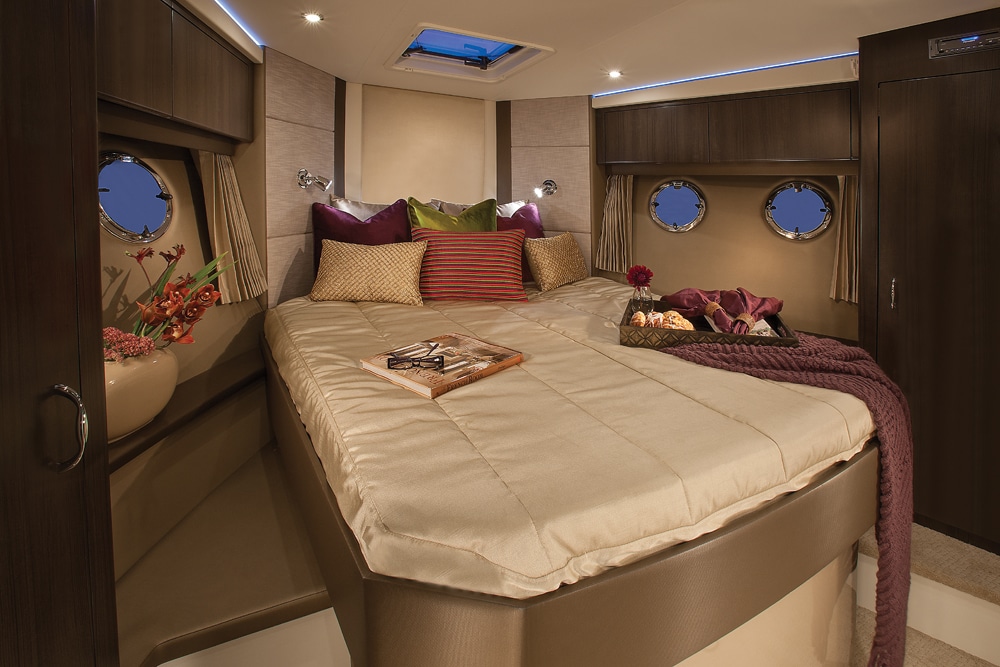
Carver C40
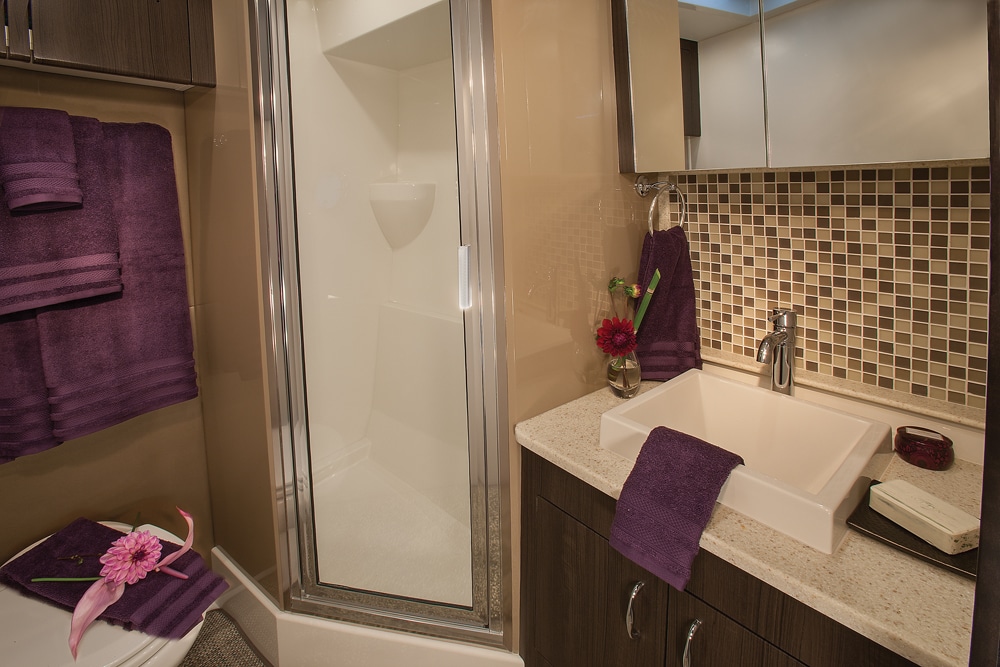
Carver C40
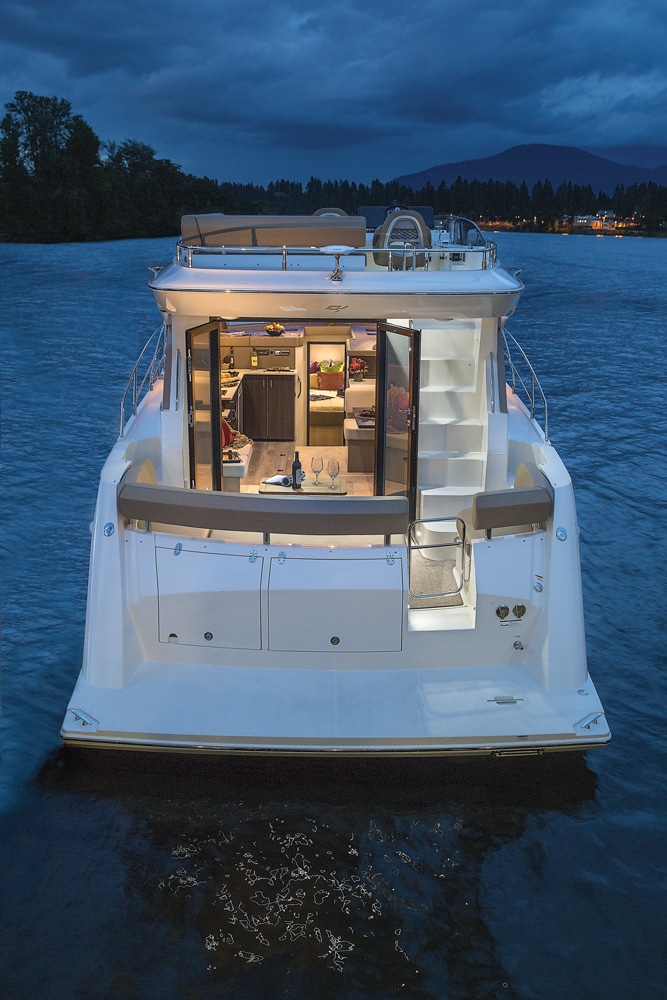
Carver C40
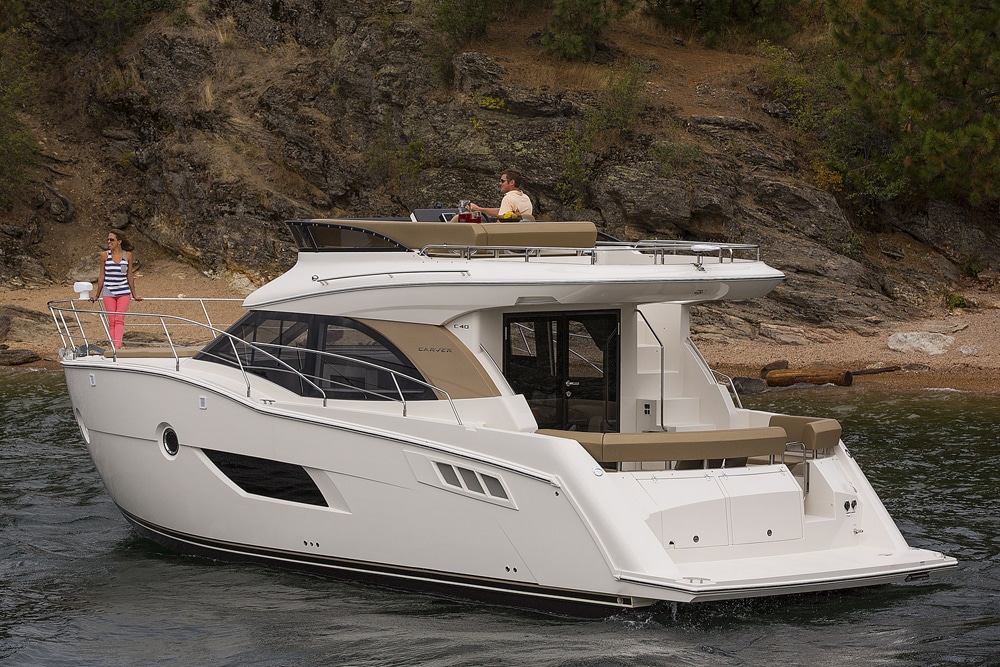
Carver C40
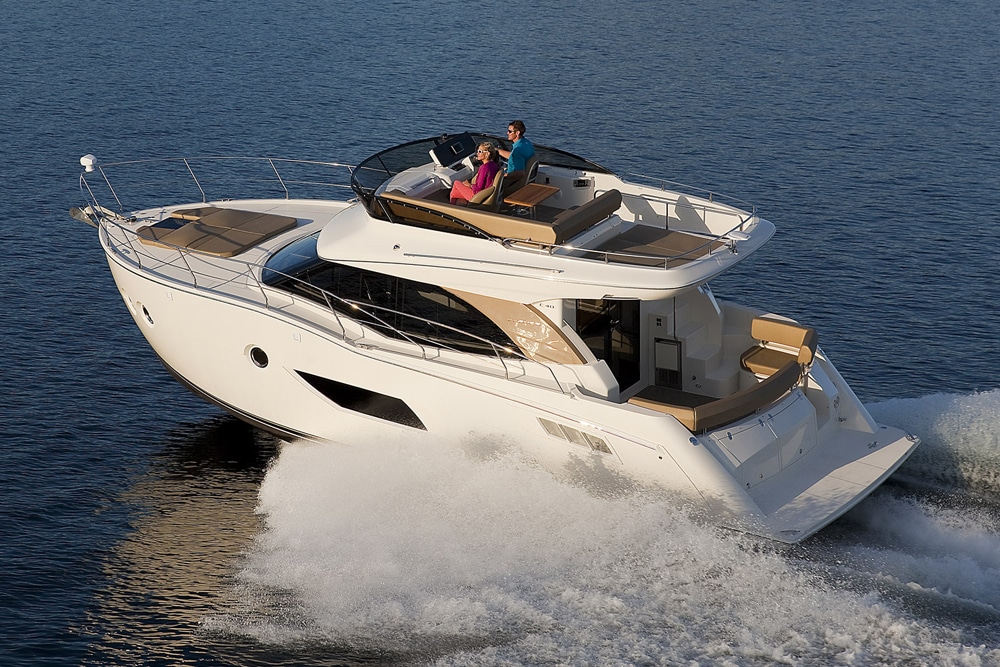
Carver C40
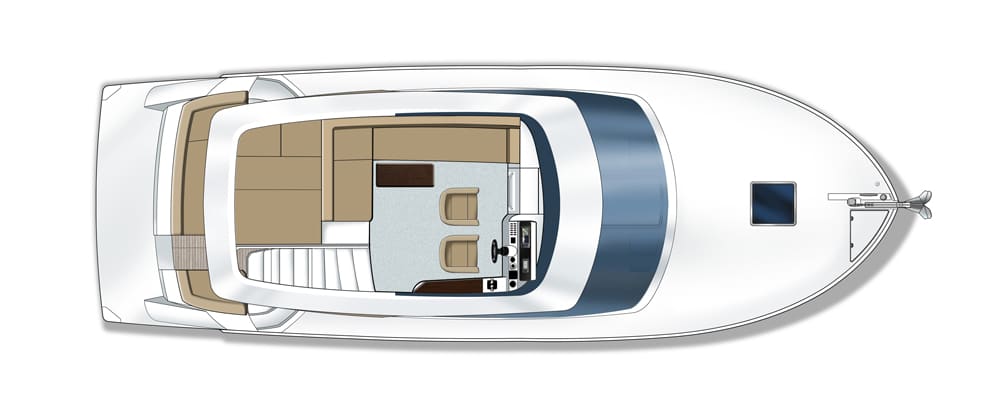
Carver C40
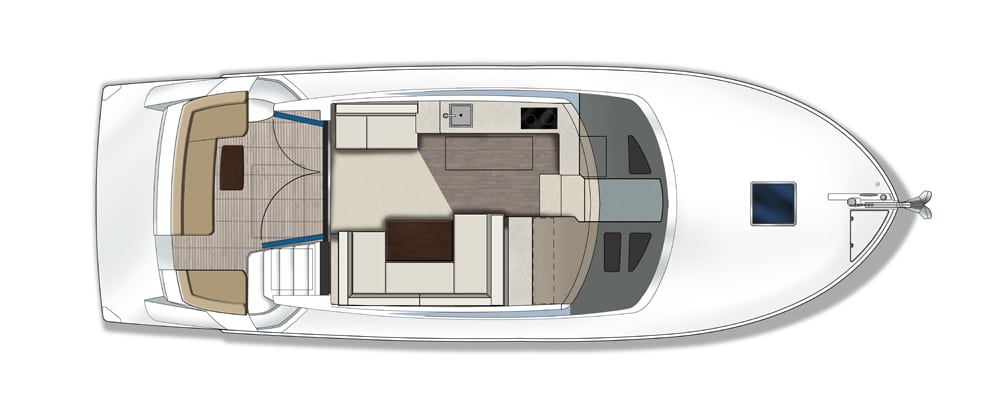
Carver C40
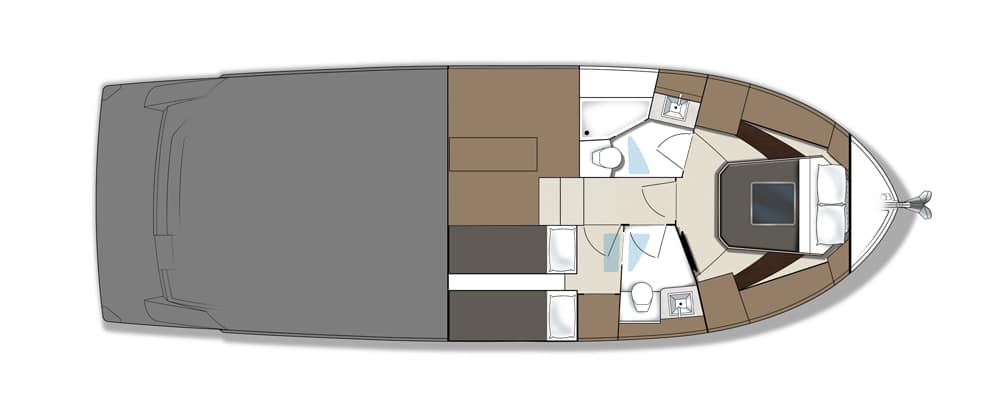
Carver C40
Carver calls the sedan bridge design on the new C40 a “command bridge,” and while we waited for the helicopter to show for our cover photo shoot, I could see the reasoning. Normally you can hear a chopper well before you see it, but from the elevated helm of the C40 I noticed it appear far off on the horizon, instantly validating the commanding view a bridge affords.
In designing a cruiser with a command bridge helm, Carver is aiming squarely at smaller express cruiser owners looking to up their overall length, cruising comfort and range. To achieve that, Carver designed the all-new C40 from the keel up, which means it sprung from new tooling with a fresh new design. Outside of the bridge, the most striking thing about the boat is its plumb bow, a design that carries the bow vertically down to the waterline. While plumb bows are common on workboats, military vessels and trawlers, it’s rare to see one on a planing cruiser these days — most builders opt for a stem that rakes aft to connect with the bottom at the waterline. A plumb bow keeps more hull in the water forward, helping to smooth the ride in rough seas. It also increases the interior volume of the boat, which, when combined with the 13-foot-6-inch beam, allows for a spacious layout belowdecks.
This is evident in the forward master stateroom, where the elevated island berth appears to be at a more accessible height than on comparable cruisers. Carver says it’s about a foot lower; while I wasn’t able to verify that claim, I could tell it was one of the easiest berths to climb in and out of, which is noteworthy. Also of note is the private master head with a separate fiberglass shower stall. There’s a day-head for guests across the passageway that has a handheld shower nozzle. That Carver was able to fit two heads plus a master and guest stateroom aboard a 40-footer is a testament to the extra volume the plumb bow helps to create.
There aren’t too many competitors in this category, but one to take a look at is the Meridian 391 Sedan ($578,687 with twin QSB 6.7-liter 380 hp Cummins diesel inboards), another cruiser with a sedan bridge helm and two staterooms belowdecks. The Meridian is actually beamier but sports a more raked bow and a straight sheer line, compared with the broken sheer of the C40’s profile. If you prefer octane to cetane, though, Meridian offers the 391 Sedan with a pair of 370 hp Mercury 8.1 Horizon gasoline inboards. There is no gas power option for the C40.
The C40’s salon is bathed in natural light, thanks to windows that wrap around its entirety. The sedan bridge helm allows for more amenities in the salon, such as the full galley to port with solid-surface countertops. To starboard there’s dedicated stemware stowage and a U-shaped dinette that can be converted to a bed if extra sleeping space is needed. (For boaters in cold-weather climates, a lower helm is offered as an option.) A small settee aft of the galley to port provides additional seating. I found the ride in the salon very pleasant while underway, recording a conversation-friendly 75 decibels (dbA) inside while running at 24 mph.
However, I’m the type of boater who likes to ride outside, and the C40 offers ample space for that. Start with the cockpit, which features a wraparound transom bench interrupted only by the stainless-steel boarding gate. (Owners looking to do some casual fishing can ditch the seating for an open cockpit array.) The cushions are covered in a plush champagne vinyl, and the backrests are mounted on separate fiberglass parts upheld by stainless-steel supports. Carver is unique in that all stainless steel and upholstery is done in-house
Carver also vacuum-bags every fiberglass part on the boat, even the hull and deck. The resin-infusion process is precise and keeps total weight down, important for a boat with large additional components like the command bridge. About that bridge, it provides the extra outdoor space that makes sedans so appealing compared with express cruisers. The twin bucket seats at the helm, the L-lounge to port and the aft sun pad all keep cruiser claustrophobia at bay.
If there’s a knock on this style of boat, it’s that its wide beam and high profile make it hard to steer in close quarters and susceptible to pounding in rough seas. But on photo-shoot day we ran the C40 outside the inlet in tight 2- to 3-footers and felt comfortable riding in the 20 to 25 mph range. Carver attributes that to the improved center of gravity afforded by inboards and the extra wetted surface from the plumb bow. Good traits for a cruiser. As for the close-quarters handling, the optional bow thruster solves the problem, as once we were safely inside the inlet we used it to ease into our slip at the marina. Bridge or no bridge, that was easy to see.
Comparable model: Meridian 391
